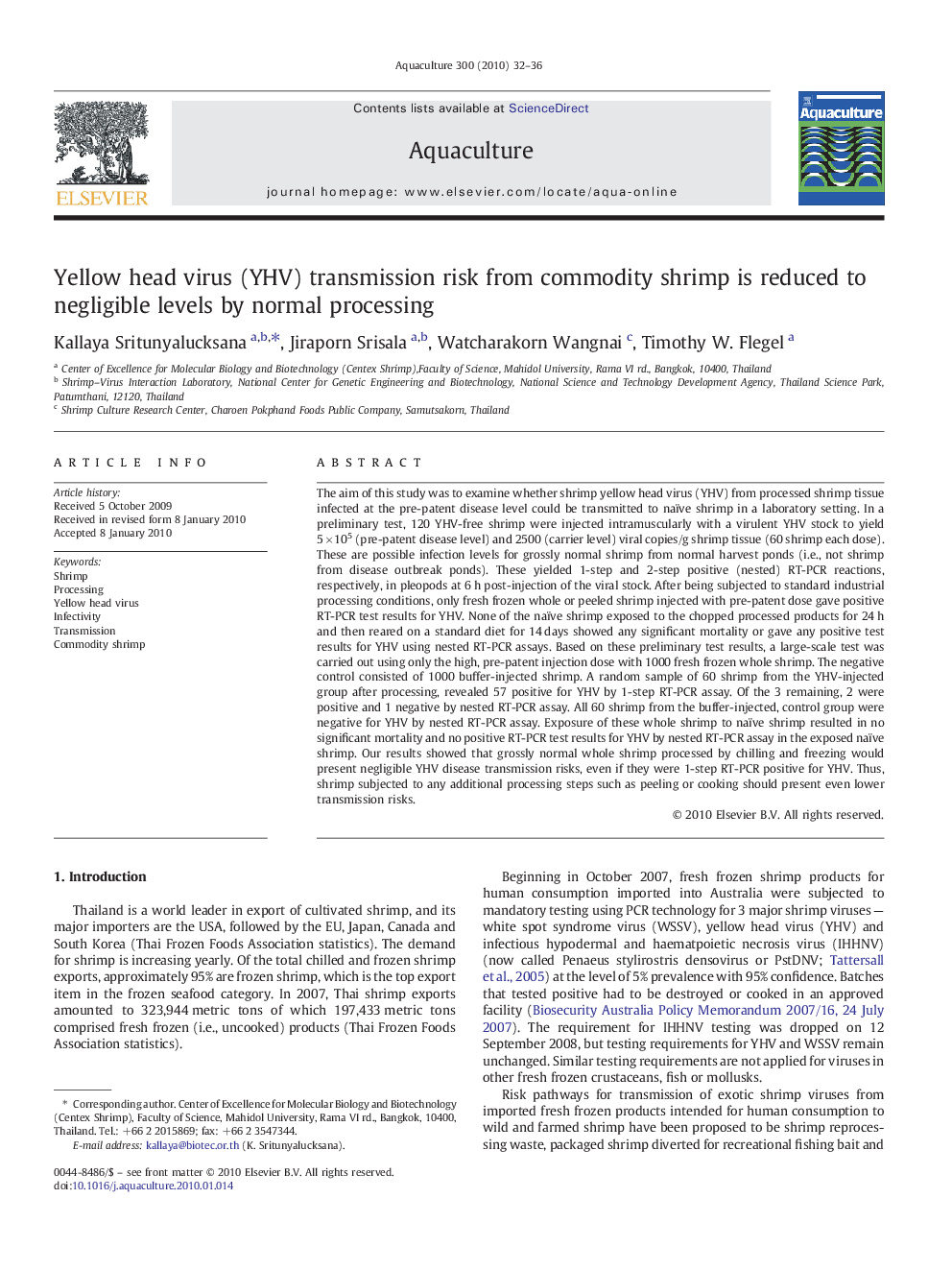| کد مقاله | کد نشریه | سال انتشار | مقاله انگلیسی | نسخه تمام متن |
|---|---|---|---|---|
| 2423728 | 1552929 | 2010 | 5 صفحه PDF | دانلود رایگان |

The aim of this study was to examine whether shrimp yellow head virus (YHV) from processed shrimp tissue infected at the pre-patent disease level could be transmitted to naïve shrimp in a laboratory setting. In a preliminary test, 120 YHV-free shrimp were injected intramuscularly with a virulent YHV stock to yield 5 × 105 (pre-patent disease level) and 2500 (carrier level) viral copies/g shrimp tissue (60 shrimp each dose). These are possible infection levels for grossly normal shrimp from normal harvest ponds (i.e., not shrimp from disease outbreak ponds). These yielded 1-step and 2-step positive (nested) RT-PCR reactions, respectively, in pleopods at 6 h post-injection of the viral stock. After being subjected to standard industrial processing conditions, only fresh frozen whole or peeled shrimp injected with pre-patent dose gave positive RT-PCR test results for YHV. None of the naïve shrimp exposed to the chopped processed products for 24 h and then reared on a standard diet for 14 days showed any significant mortality or gave any positive test results for YHV using nested RT-PCR assays. Based on these preliminary test results, a large-scale test was carried out using only the high, pre-patent injection dose with 1000 fresh frozen whole shrimp. The negative control consisted of 1000 buffer-injected shrimp. A random sample of 60 shrimp from the YHV-injected group after processing, revealed 57 positive for YHV by 1-step RT-PCR assay. Of the 3 remaining, 2 were positive and 1 negative by nested RT-PCR assay. All 60 shrimp from the buffer-injected, control group were negative for YHV by nested RT-PCR assay. Exposure of these whole shrimp to naïve shrimp resulted in no significant mortality and no positive RT-PCR test results for YHV by nested RT-PCR assay in the exposed naïve shrimp. Our results showed that grossly normal whole shrimp processed by chilling and freezing would present negligible YHV disease transmission risks, even if they were 1-step RT-PCR positive for YHV. Thus, shrimp subjected to any additional processing steps such as peeling or cooking should present even lower transmission risks.
Journal: Aquaculture - Volume 300, Issues 1–4, 27 February 2010, Pages 32–36